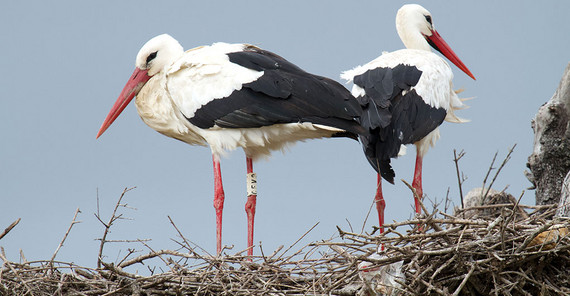Many migratory birds make epic journeys from one part of the planet to another to find similar environmental conditions between seasons, displaying a seasonal niche tracking strategy. However, up to now it remained unclear whether such niche tracking pattern is a direct consequence of individual behaviour or only emerges at the population level and community level.
Using high precision GPS devices, the team followed a large number of white storks travelling within Europe and between Europe and Africa for several years. This technology allowed to quantify seasonal niche tracking for both weather (short-term changes in the atmosphere) and climate (long-term environmental conditions), to control for the different spatio-temporal scales at which ecological processes can operate.
The tags revealed that white stork's individuals track weather but not climate between seasons, while the population does both. These results highlight the importance of studying the individual variation in seasonal movement patterns to understand the mechanisms underlying population-level responses to environmental change. Overall, the knowledge of how migratory individuals, populations and species respond to seasonal environments is critical for anticipating potential global change impacts.
The research was done in the context of the Emmy Noether project BIOPIC, supported by the German Science Foundation DFG and lead by Damaris Zurell, Professor for Ecology and Co-author of the study. Data were kindly provided through a German-Israeli Project Cooperation (DIP) by DFG on life time tracks and fitness of long-distance migratory birds formerly run by Prof. Florian Jeltsch at the University of Potsdam and partners in Konstanz and Israel.
Link to Publication: Fandos G., Rotics S., Sapir N., Fiedler W., Kaatz M., Wikelski M., Nathan R., Zurell D. 2020 Seasonal niche tracking of climate emerges at the population level in a migratory bird. Proc. R. Soc. B 287: 20201799. https://doi.org/10.1098/rspb.2020.1799
Contact:
Guillermo Fandos-Guzman (PhD), Institute of Biochemistry and Biology, Tel.: +49 331 977-191003 fandos-guzmanuuni-potsdampde
Prof. Dr. Damaris Zurell, Institute of Biochemistry and Biology, Tel.: +49 331 977-1910, damaris.zurelluuni-potsdampde
Image: White storks in the field. Image Credit: Guillermo Fandos-Guzman
Media information 25-09-2020 / No. 089

